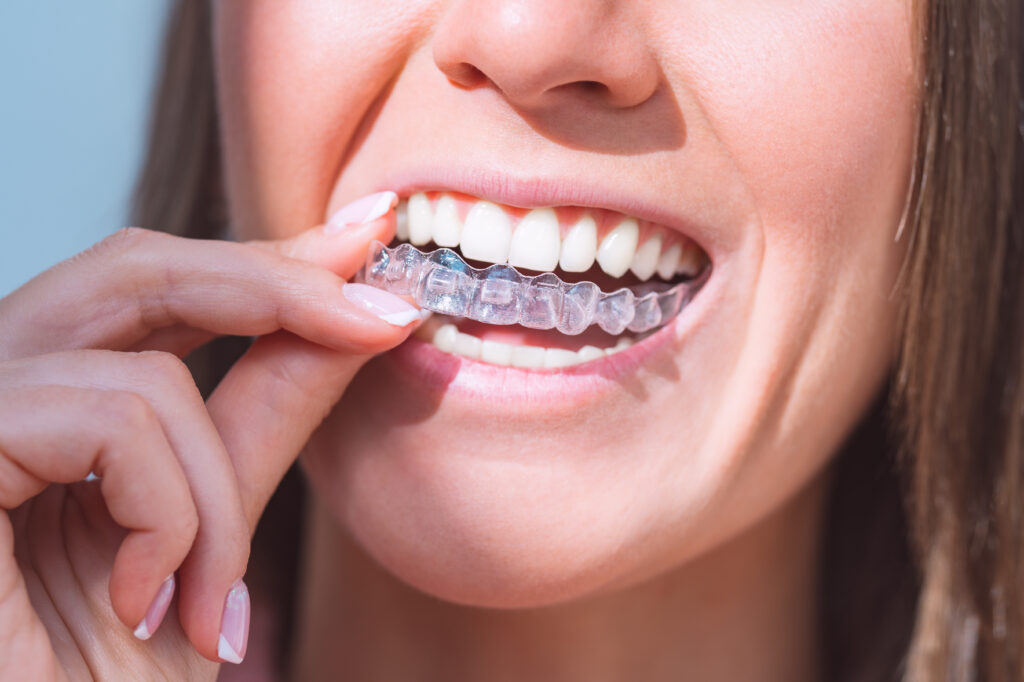What Is a Retainer and Why Do You Need It After Braces or Invisalign?

After months or even years of dedication to braces or Invisalign, it’s natural to feel excited about showing off your new smile. But before you toss aside your aligners or celebrate the removal of your brackets, there’s one more essential phase of your orthodontic journey: retention.
That’s where retainers come in. Retainers may look simple, but they play a powerful role in maintaining the results you worked hard to achieve. Understanding why they matter—and wearing them consistently—can make the difference between a lifelong smile and a frustrating relapse.
What Is a Retainer?
A retainer is a custom-made orthodontic appliance designed to help keep your teeth in their new, corrected positions after you’ve completed treatment with braces or Invisalign. Unlike braces or aligners, retainers don’t move teeth—they maintain alignment by holding the teeth in place.
There are two primary types of retainers: removable and fixed.
-
Removable retainers are made of either clear plastic (like Invisalign trays) or a combination of acrylic and metal wires that wrap around your teeth. You can take them out while eating, drinking, or cleaning, but they must be worn as prescribed to be effective.
-
Fixed retainers, also known as bonded or permanent retainers, are small wires attached to the back of the front teeth (usually the lower ones) using a dental adhesive. These retainers are not visible and provide 24/7 support.
Why Are Retainers So Important?
Your teeth are not set in stone—even after orthodontic treatment. When braces or aligners are removed, the ligaments and tissues that hold your teeth in place are still adjusting to their new positions. Without consistent retention, these tissues can pull the teeth back toward their original alignment. This process, known as orthodontic relapse, is surprisingly common and can occur quickly if retainers aren’t worn.
Here’s why retainers are critical:
1. Prevent Orthodontic Relapse
The most important job of a retainer is to prevent your teeth from shifting back to where they started. Orthodontic relapse is not only discouraging—it may require additional treatment to correct.
2. Stabilize Your Bite
Teeth don’t just move through the bone—they also affect the surrounding muscles, ligaments, and joints in your mouth. Retainers help stabilize your bite, giving time for all of these structures to adapt to the new alignment.
3. Protect Your Investment
Orthodontic treatment is a significant commitment of time, money, and patience. Wearing your retainer is the easiest and most affordable way to protect that investment and enjoy the benefits of your new smile for years to come.
4. Support Continued Growth in Teens
For teenagers who complete orthodontic treatment while still growing, retainers are especially important. As the jaw and face continue to develop, retainers help ensure that teeth remain aligned during this period of natural change.
How Long Do You Have to Wear a Retainer?
Retention is a lifelong process, but that doesn’t mean you’ll be wearing your retainer 24/7 forever. Your orthodontist will provide a schedule tailored to your specific case, but here’s a general idea of what to expect:
-
Immediately after treatment: Most patients are advised to wear their retainer full-time (usually 20–22 hours a day) for the first several months after braces or Invisalign. This gives your teeth and supporting tissues the best chance to settle.
-
Long-term wear: After the initial phase, your orthodontist will gradually reduce wear to nighttime only. In many cases, nighttime wear should continue indefinitely to keep your smile stable.
Skipping even a few days can allow your teeth to shift slightly, which may make the retainer feel tight or uncomfortable. This is a sign that it’s working—but also a warning that your teeth are starting to move.
Taking Care of Your Retainer
Proper care can help extend the life of your retainer and keep it hygienic and comfortable.
-
Clean daily: Rinse and gently brush removable retainers with a soft toothbrush. Avoid hot water, which can warp the plastic.
-
Store properly: Always use a case when your retainer isn’t in your mouth. This prevents loss or damage.
-
Avoid harsh chemicals: Mouthwash and toothpaste can be abrasive on clear retainers. Stick to gentle soaps or special cleaning crystals if recommended.
-
Check for wear: Bring your retainer to follow-up visits. Over time, it may need to be adjusted or replaced.
For fixed retainers, regular brushing, flossing, and dental checkups are essential to prevent plaque buildup around the wire.
Keep Your Smile for Life with Hom Orthodontics
At Hom Orthodontics, we believe your smile should last a lifetime—not just the duration of your braces or Invisalign treatment. That’s why we emphasize retention as a key part of your overall orthodontic plan. From personalized retainer instructions to long-term follow-up care, our team is here to support every phase of your smile journey.
If you’ve completed orthodontic treatment and are unsure about your retainer routine—or if you’ve lost or broken your retainer—don’t wait. Contact our Manhattan Beach office today to schedule a consultation. We’ll make sure your smile stays as straight and stunning as the day you got your braces off.
Maintain your alignment, protect your investment, and keep your confidence high. Let Hom Orthodontics guide you every step of the way.
Looking for a trusted Manhattan Beach orthodontist? Our experienced team is ready to help you keep your smile shining.
